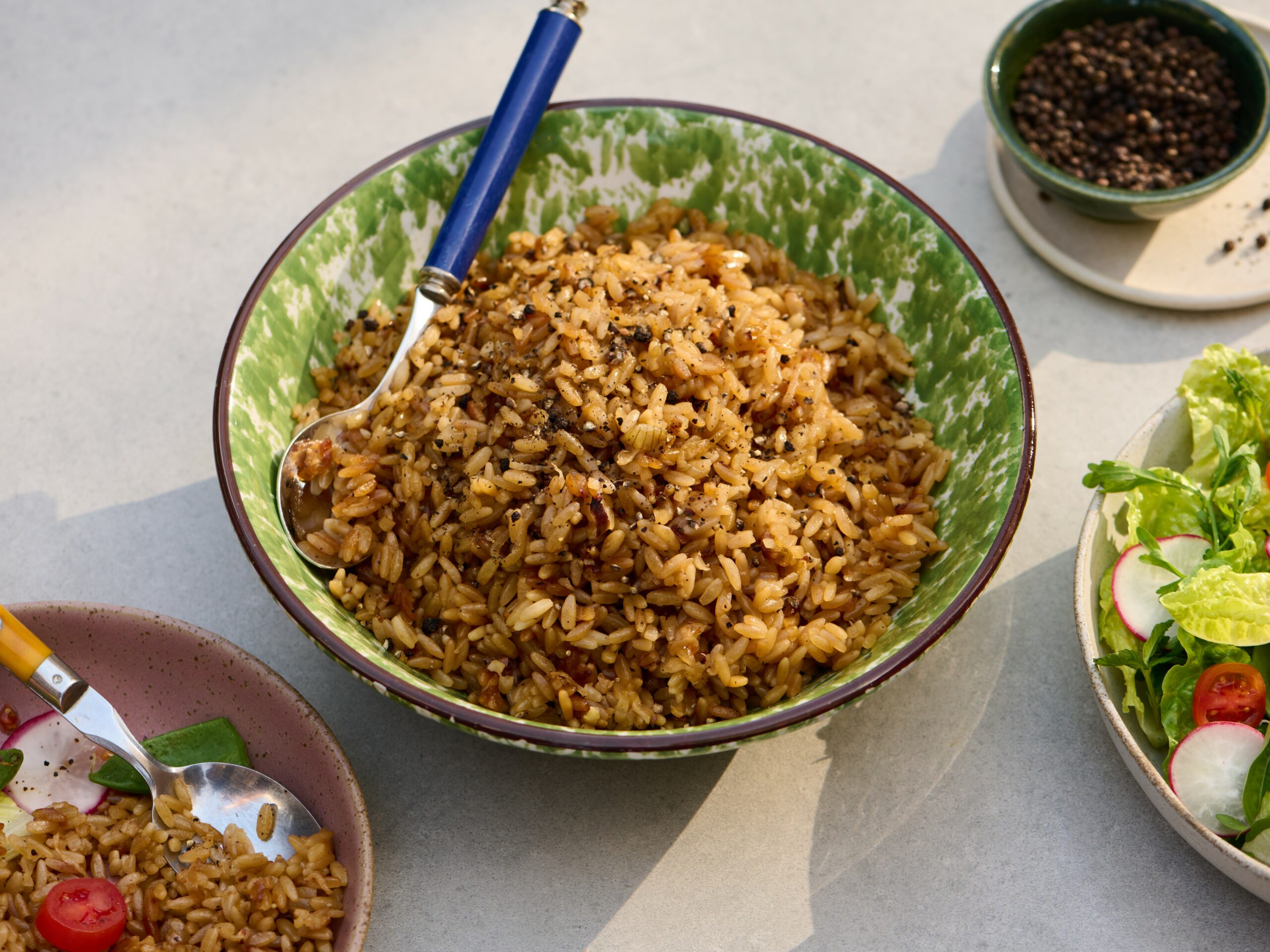During modern Israel’s first years, a massive influx of immigrants and economic hardships created a shortage of food leading to an austerity program called tzena. In 1951, Prime Minister David Ben-Gurion approached Eugen Propper, one of the founders of the Osem food company and an expert for noodle manufacturing, for help. Ben-Gurion asked him to develop an inexpensive substitute for rice — a staple food for immigrants from North Africa and the Middle East — made with the more accessible wheat.
Propper, whose family was Czech, recalled farfel or farfalach, short noodles eaten at his home on Shabbat and Rosh Hashanah. He developed a similar industrial product, a short rice-shaped pasta known as “Ben-Gurion Rice.” Once rice became more widely available in Israel, it was turned into a small round pasta known today as ptitim.
Although ptitim are considered an iconic food of Israeli cuisine, similar pastas can be found in various other kitchens like Palestinian maftoul and the Italian orzo, acini di pepe, and fregola sarda. Like the latter and traditional farfel, ptitim are toasted during their manufacturing. In Israel, ptitim are also fried in oil or butter by home cooks before they are cooked in water, giving them their unique flavor and texture.
After completing culinary school in New York in the 1990s, chef Mika Sharon worked in an acclaimed Tribeca restaurant where she befriended chef Don Pintabona. One night, she invited Pintabona over for dinner and served him ptitim with fried onions. The enthusiastic chef asked if he could take a packet home. He cooked it in water, like pasta, added a sauce and served it with fish as a special at the restaurant describing it as “Israeli couscous.” The name stuck.
In Israel, too, ptitim have ventured out of the home kitchen and into restaurants where the once kids’ food is reinvisioned as “ptitim risotto.” The metamorphoses of ptitim, from a product of necessity to a dish served in restaurants around the world, is in a sense the story of the Israeli kitchen. Below is the ptitim dish served by Elran Shrefler, the son of the owner of Azura, at his restaurant Ibn Ezra. It has plenty of patiently fried onions with a little honey and loads of black pepper. A relatively long cooking time and a reduced amount of water results in brownish ptitim that don’t clump up and have an intense, sweet, and spicy flavor reminiscent of Jerusalem kugel.
¼ (60 ml) cup olive oil
3 onions, peeled and sliced thin
1 teaspoon honey
1 garlic clove, sliced
1 pound (500 grams) Israeli couscous
2½ cups water
1 heaped teaspoon crushed black pepper
1 teaspoon salt or more
- Heat the olive oil in a medium sauce pan over medium-high heat. Add the sliced onion, garlic, and honey. Stir well and lower the heat. Cook until caramelized to a golden brown, about 30 minutes.
- Add the Israeli couscous and black pepper, stir, and continue to cook for about 5 more minutes. In the meantime, bring the water to boil.
- Pour the boiling water into the pot, add salt, cover, and simmer on the lowest heat possible for about 30 minutes.




